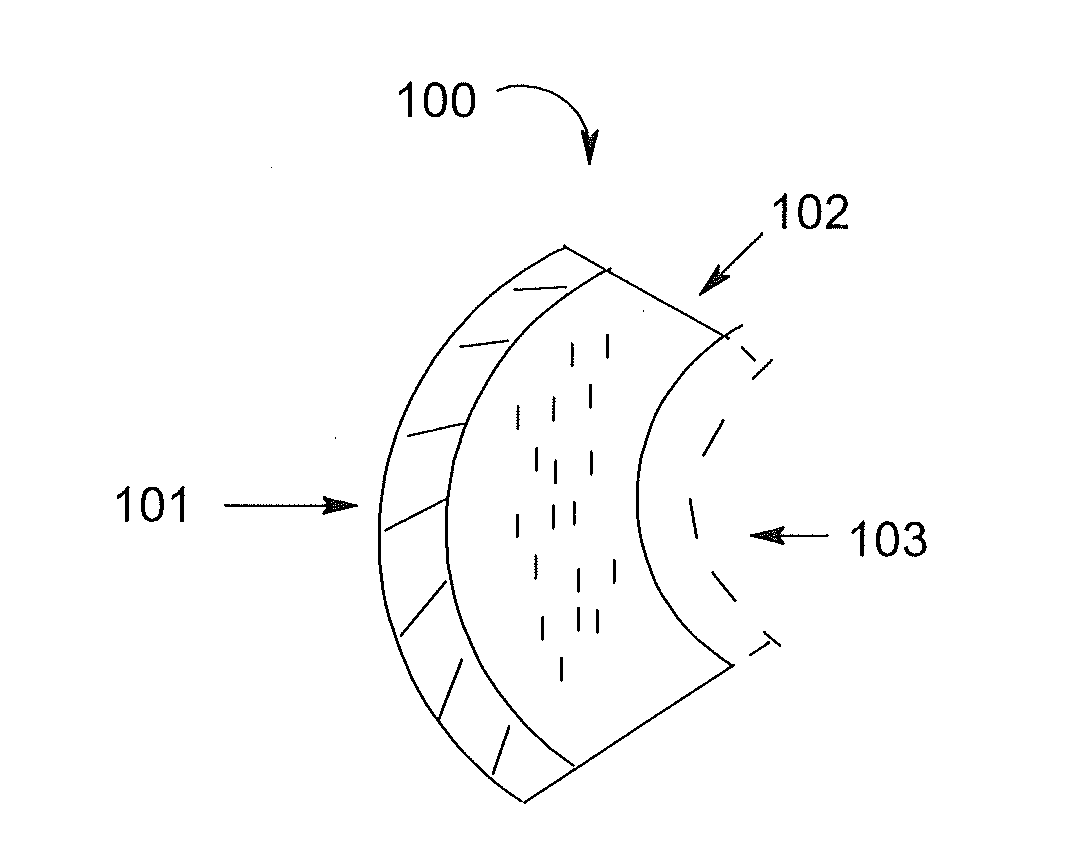Flame resistant composite structure
- Summary
- Abstract
- Description
- Claims
- Application Information
AI Technical Summary
Benefits of technology
Problems solved by technology
Method used
Image
Examples
example 1
Phenolic Resin Coated Epoxy Composite Material
[0056]Samples of the phenolic resin coated epoxy composite material were prepared as follows. The phenolic material of Cellobond FRP J2027L was blended with Cellobond Phencat 10 catalyst as 100 parts of phenolic resin and 10 parts catalyst. The mixed phenolic material was then poured into the plastic tube. The epoxy composite panel was placed in the plastic tube and the mixed phenolic material was disposed on the epoxy composite panel. The epoxy composite panel was exposed to the mixed phenolic material for thirteen minutes and allowed to dry for three hours. The epoxy composite panel was then placed again in the plastic tube and a second coat of the mixed phenolic material was disposed on the epoxy composite panel. The epoxy composite panel was then cured for 72 hours at ambient conditions.
example 2
Fiber Reinforced Phenolic Layered Epoxy Composite Material
[0057]Samples of the fiber reinforced phenolic resin coated epoxy composite material were prepared as follows. A 7″ long sleeve was made from the thin woven fiberglass and then an epoxy composite panel was placed into the sleeve. The phenolic material of Cellobond FRP J2027L was blended with Cellobond Phencat 10 catalyst as 100 parts of phenolic resin and 8 parts catalyst. The mixed phenolic material was then poured into the plastic tube. The sleeved epoxy composite panel was placed in the plastic tube and the mixed phenolic material was disposed on the sleeved epoxy composite panel. The sleeved epoxy composite panel was exposed to the mixed phenolic material for thirteen minutes and allowed to dry for three hours. The epoxy composite panel was then placed again in the plastic tube and a second coat of the mixed phenolic material was disposed on the sleeved epoxy composite panel. The resulting epoxy composite panel was then c...
PUM
 Login to View More
Login to View More Abstract
Description
Claims
Application Information
 Login to View More
Login to View More - R&D
- Intellectual Property
- Life Sciences
- Materials
- Tech Scout
- Unparalleled Data Quality
- Higher Quality Content
- 60% Fewer Hallucinations
Browse by: Latest US Patents, China's latest patents, Technical Efficacy Thesaurus, Application Domain, Technology Topic, Popular Technical Reports.
© 2025 PatSnap. All rights reserved.Legal|Privacy policy|Modern Slavery Act Transparency Statement|Sitemap|About US| Contact US: help@patsnap.com


